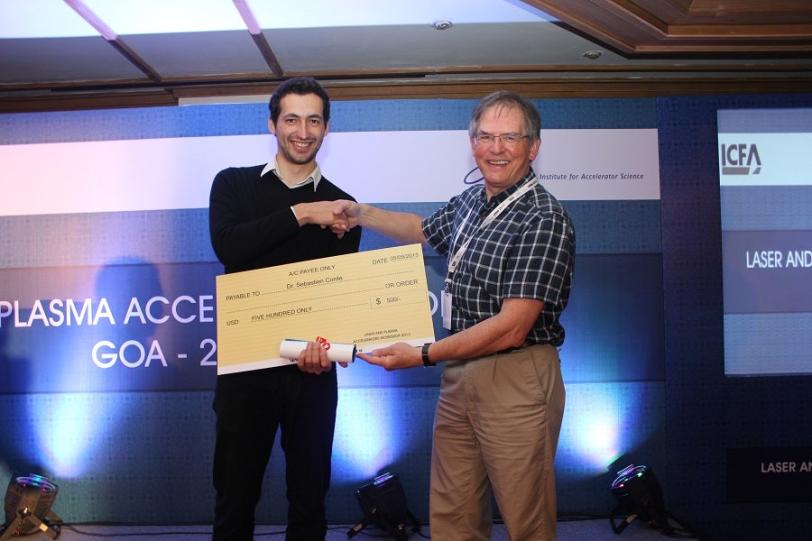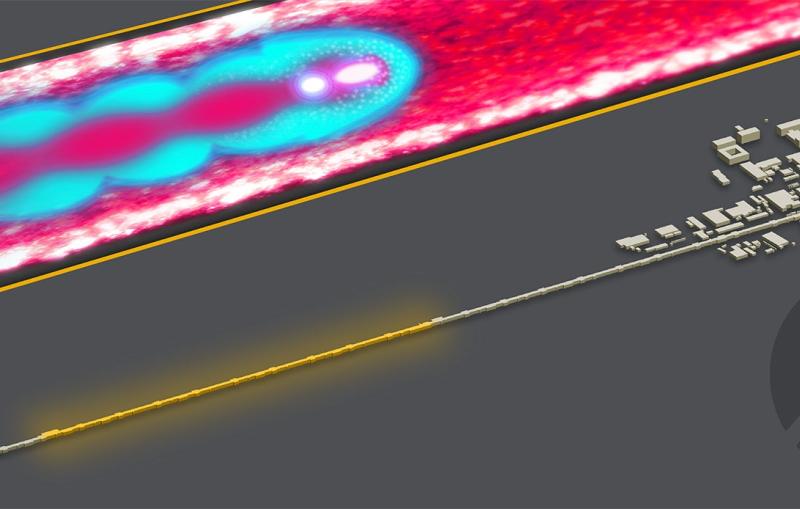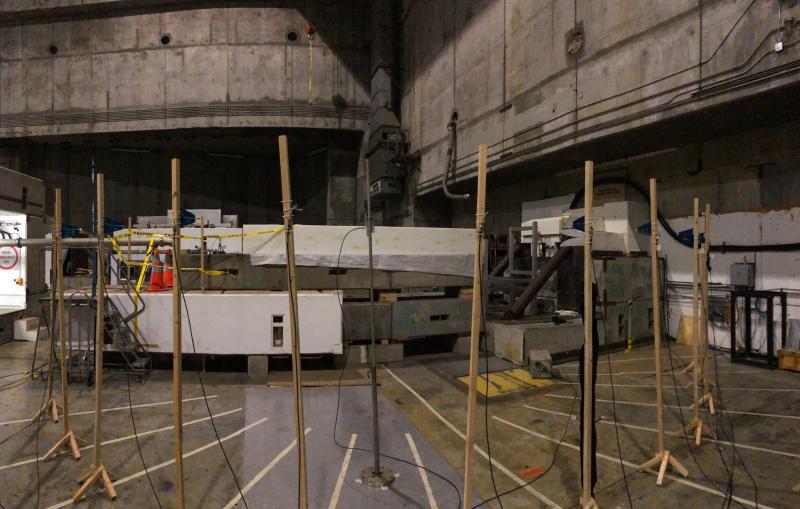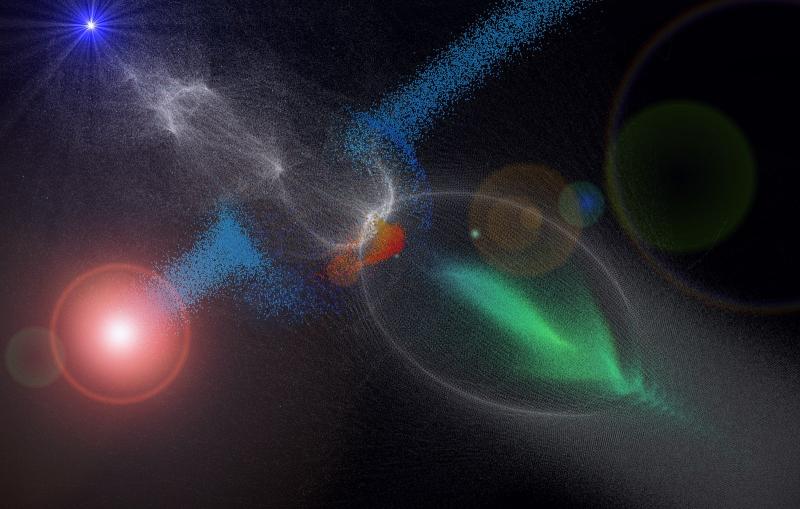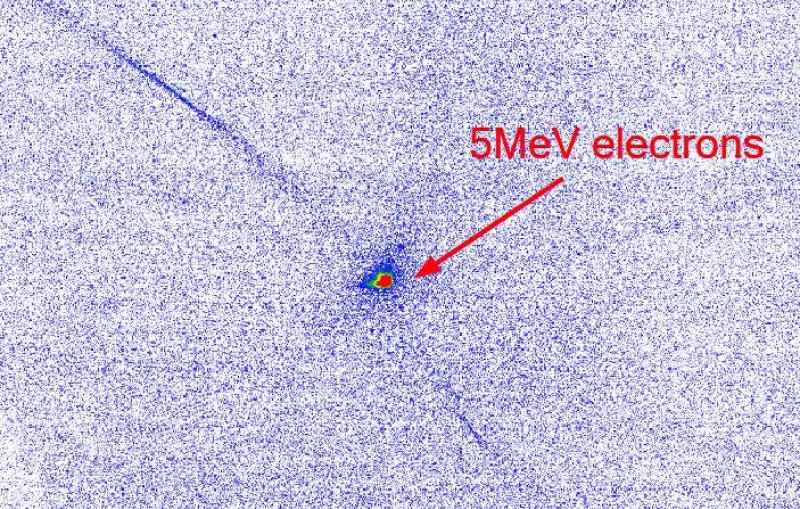SLAC Researcher Lauded for Ground-breaking Graduate Work
FACET postdoc Sébastien Corde has been recognized not once, not twice, not three times, but four times for his research into developing small, economical sources of X-rays using laser-plasma interactions.
By Lori Ann White
Sébastien Corde, a postdoctoral researcher with SLAC's Facility for Advanced Accelerator Experimental Tests (FACET), has seen his career as a physicist get off to a very promising start.
Corde has received four separate awards for the work he completed to earn his PhD: a thesis prize from his university, the École Polytechnique near his hometown of Paris; the René Pellat award from the French Society of Physics; the John Dawson Thesis Prize, awarded at the Laser and Plasma Accelerators Workshop in September; and the 2013 Outstanding Doctoral Thesis Research in Beam Physics Award from the American Physical Society, which he'll accept at a presentation next April.
He's also been able to adapt that work to the very different requirements of the plasma wakefield experiments taking place at FACET.
Corde studied what happens when high-powered lasers are shot into clouds of charged particles, called plasmas. These laser-plasma interactions can accelerate particles or produce other types of electro-magnetic energy, from ultraviolet light all the way up to gamma rays. His PhD work focused on how to combine lasers and plasma into a practical source of X-rays.
Corde also developed diagnostic instruments to gather data from the X-rays; using that data, he and his colleagues could work backward to determine precisely what was happening when laser pulse hit plasma cloud.
Then, in the spring of 2011, Corde heard two experts in plasma wakefield acceleration – Mark Hogan, head of SLAC's Advanced Accelerator Research Department, and Chandreshekar Joshi of the University of California, Los Angeles – talk about plans for a new user facility called FACET. He heard about plans to shoot even bigger lasers into an even greater variety of plasma gases in an attempt to accelerate electrons to very high energies in much more compact and economical setups than possible with current technologies.
Corde said he suddenly knew what his first postdoctoral appointment would be. So, toward the end of his PhD D work, he reached out to his contacts at SLAC and received an invitation to come and check out FACET.
"When I got here I was asked, 'What other labs are you applying to?'" said Corde. "I said, 'I'm not asking anywhere else.'"
He arrived at SLAC in March 2012, and soon ran up against differences between his PhD research and what happens at FACET. One big difference: the photon energies involved at FACET are much higher – millions of electronvolts instead of thousands. Some of the hard work he'd put in creating diagnostic instruments would need to be re-done.
That didn't faze Corde, said Hogan. "Sébastien's very clever in how he designs his diagnostics. He was able to adapt quite well, and he immediately began applying his research to the experiments at FACET."
Corde has been working on a new diagnostic that Hogan said they're all looking forward to. It's a way to get more information out of the accelerated electrons after they emerge from the plasma.
Corde believes his new equipment will work as advertised. "We're very confident we'll get some good measurements from it," he said.
He's also confident he's in the right place for now. "I've learned a lot at SLAC, and I think I've been able to contribute to FACET," he said. "I don't regret my choice to come here at all."
Corde follows fellow SLAC accelerator physicist Daniel Ratner, who received the APS award last year. Other SLAC recipients include Tor Raubenheimer, Zhirong Huang, Shyam Prabhakar, Boris Podobedov, Dmitry Teytelman and Ian Blumenfeld.
Contact
For questions or comments, contact the SLAC Office of Communications at communications@slac.stanford.edu.
